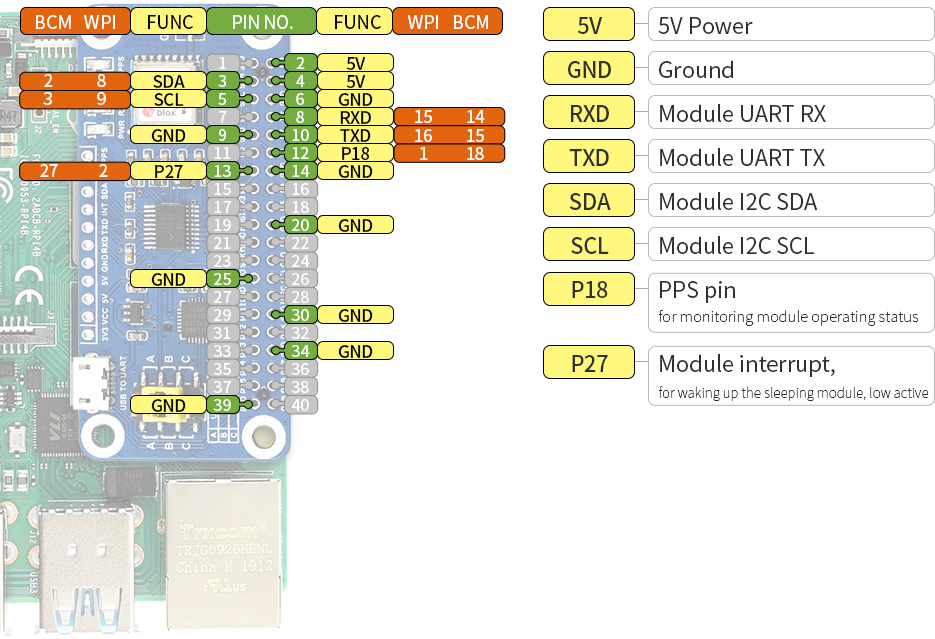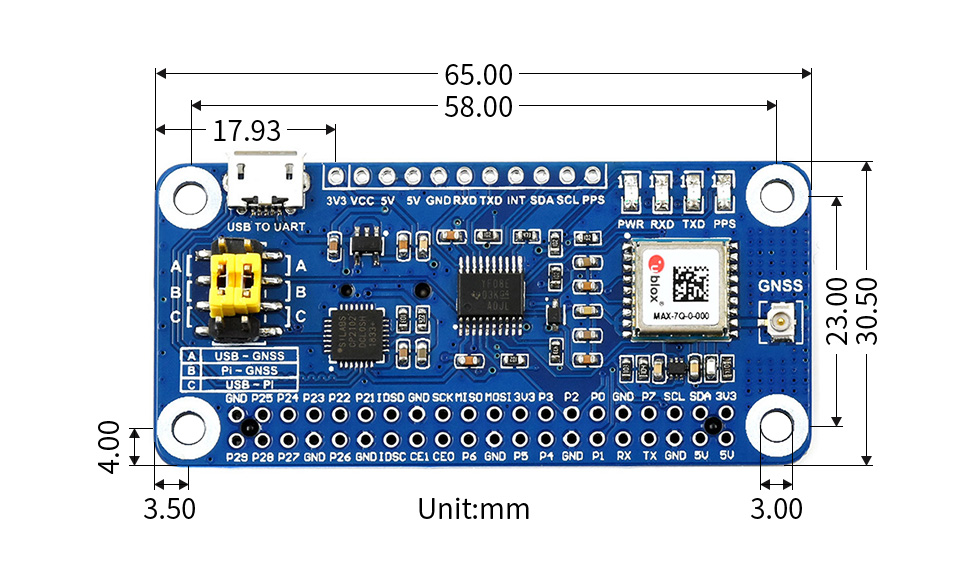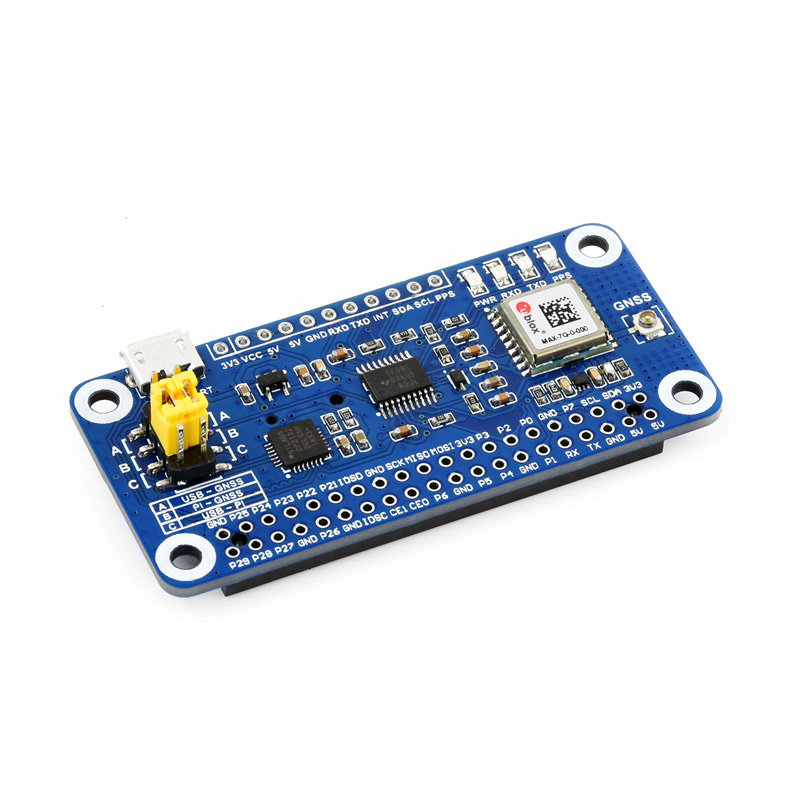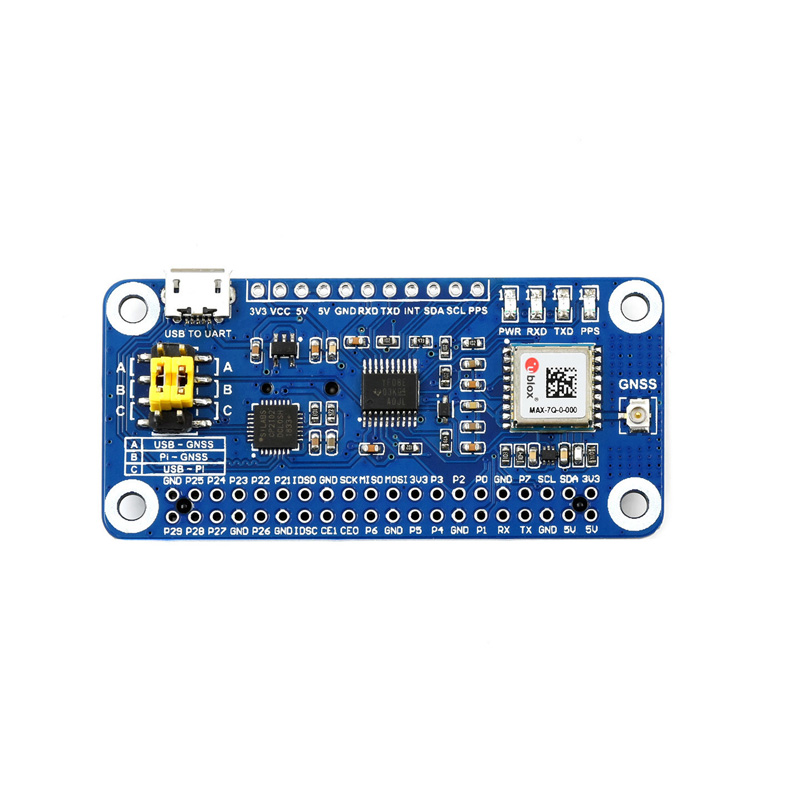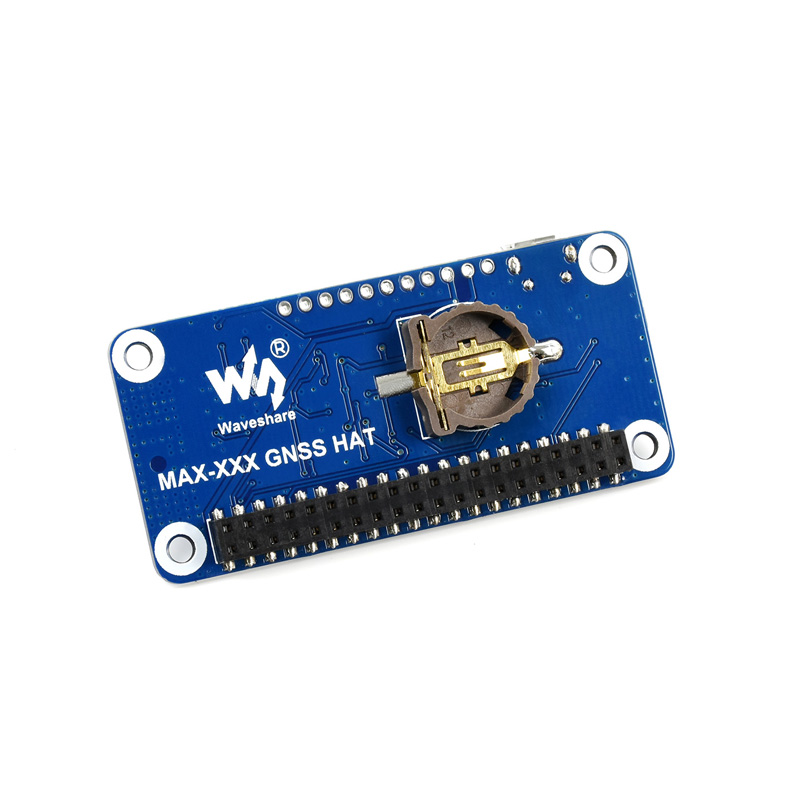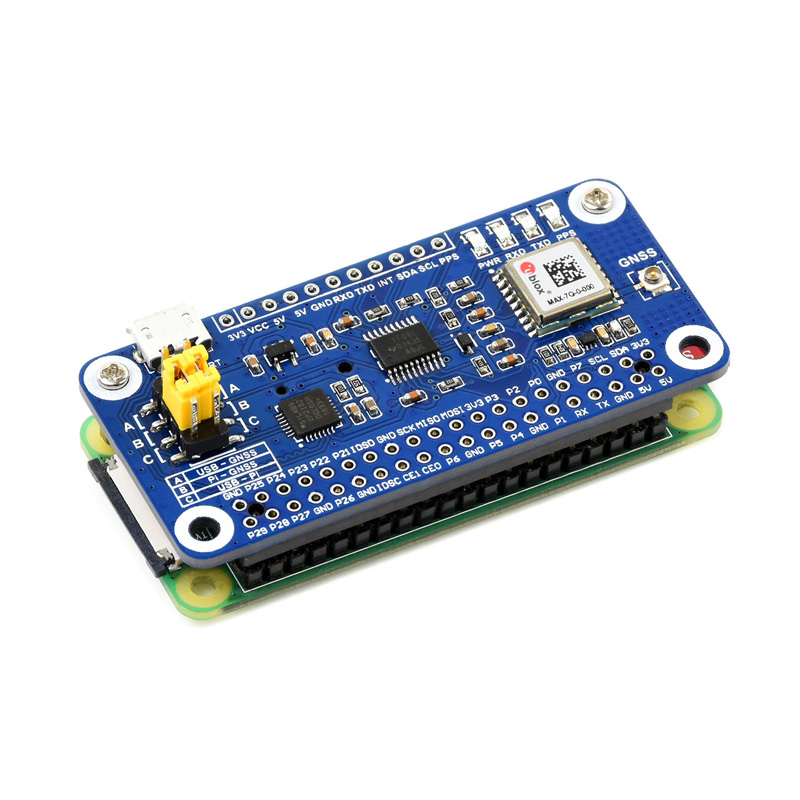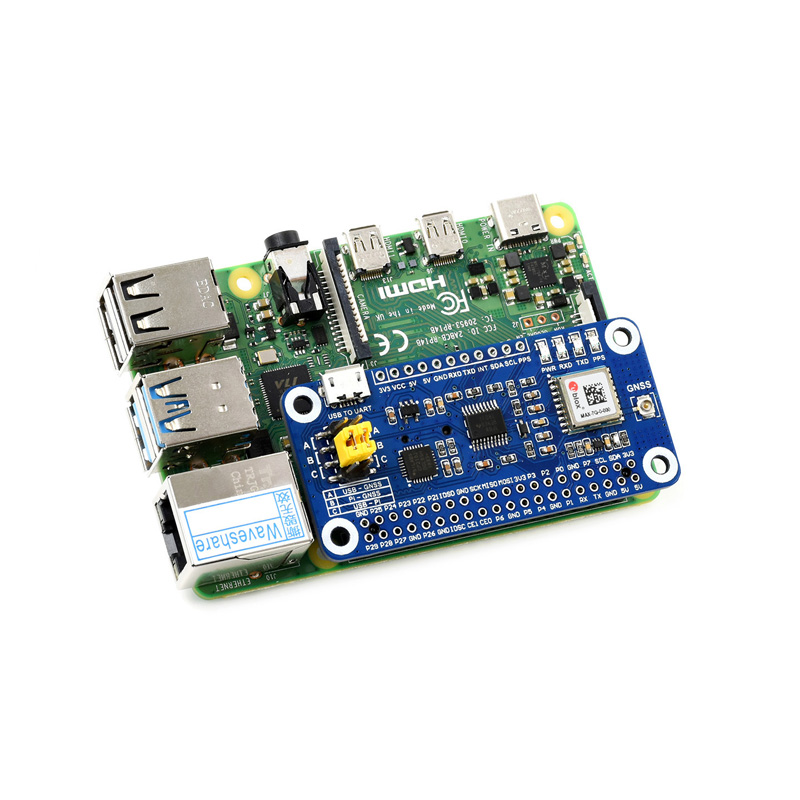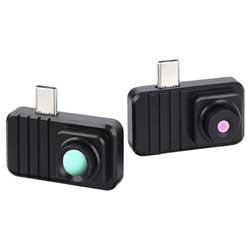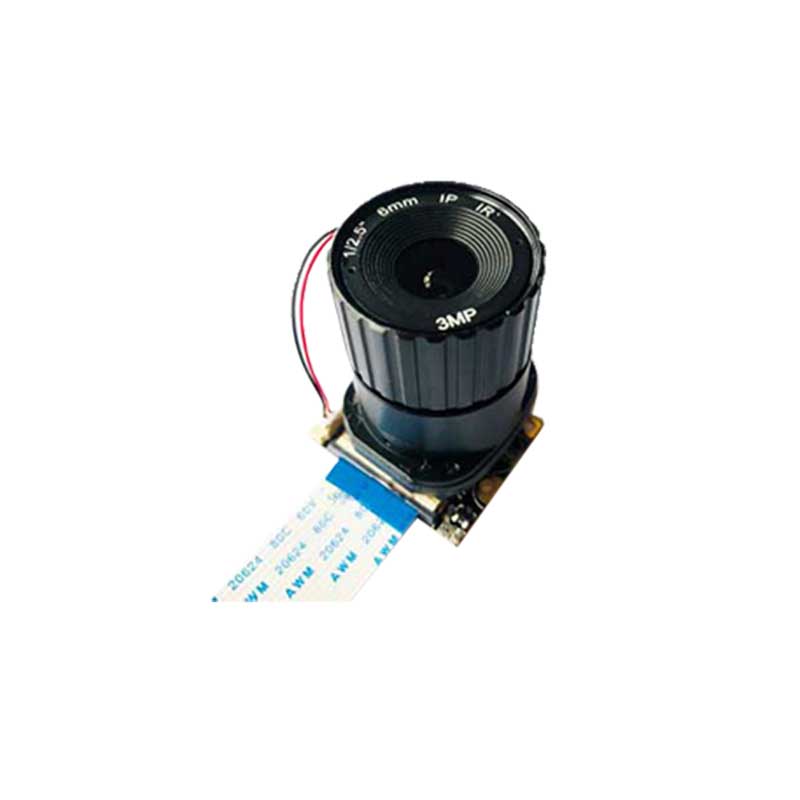- sales/support
Google Chat: zj734465502@gmail.com
- sales
+86-0755-88291180
- sales01
sales@spotpear.com
- sales02
dragon_manager@163.com
- support
tech-support@spotpear.com
- CEO-Complaints
zhoujie@spotpear.com
- sales/support
WhatsApp:13246739196
Raspberry Pi MAX 7Q GNSS HAT, GPS, GLONASS, QZSS, SBAS
$35.89
This is a Raspberry Pi GNSS HAT based on MAX-7Q, which supports positioning systems including GPS, GLONASS, QZSS, and SBAS. It features accurate & fast positioning with minor drifting, low power consumption, outstanding ability for anti-spoofing & anti-jamming, and so on.
By simply attaching it onto the Pi, it is fairly easy to enable GNSS capability for your Raspberry Pi.
GNSS Module Based On MAX-7Q For Raspberry Pi
Accurate & Fast Positioning With Minor Drifting, Low Power Consumption, Outstanding Ability For Anti-Spoofing & Anti-Jamming
This is a Raspberry Pi GNSS HAT based on MAX-7Q, which supports positioning systems including GPS, GLONASS, QZSS, and SBAS. It features accurate & fast positioning with minor drifting, low power consumption, outstanding ability for anti-spoofing & anti-jamming, and so on.
By simply attaching it onto the Pi, it is fairly easy to enable GNSS capability for your Raspberry Pi.
- Supports GPS/QZSS, GLONASS positioning systems
- A-GNSS (Assisted GNSS) support, reducing the first positioning time when powered up, improving the acquisition sensitivity
- Outstanding ability for anti-spoofing & anti-jamming, supports geo-fencing
- Supports U-Center, an easy way to config the module
- Standard Raspberry Pi 40PIN GPIO extension header, supports Raspberry Pi series boards, Jetson Nano
- Onboard USB TO UART converter CP2102 for serial debugging
- Breakouts the module's UART and I2C interface, for connecting with host boards like Arduino/STM32
- Baudrate range: 4800~921600bps (9600bps by default)
- Supports DDC (I2C compliant) interface: up to 400KHz (max)
- Onboard battery holder, supports ML1220 rechargeable cell, for preserving ephemeris information and hot starts
- 4x LEDs for indicating the module operating status
- Comes with development resources and manual (examples for Raspberry Pi/Jetson Nano/Arduino/STM32)
| GNSS SPECIFICATIONS | |||
|---|---|---|---|
| MAX-7Q | GPS | GLONASS | |
| Frequency band | 56x u-blox 7 engine channels GPS/QZSS L1C/A, GLONASS L1 FDMA, SBAS (WAAS, EGNOS, MSAS) | ||
| Horizontal positioning accuracy | Autonomous | 2.5m CEP | 4.0m CEP |
| SBAS | 2.0m CEP | - | |
| Max navigation update rate | 10Hz | 10Hz | |
| Time-To-First-Fix | Cold starts | 29s | 30s |
| Warm starts | 28s | 25s | |
| Hot starts | 1s | 1s | |
| Aided starts | 5s | - | |
| Sensitivity | Tracking and navigating | -161 dBm | -158 dBm |
| Re-acquisition | -160 dBm | -156 dBm | |
| Cold starts | -148 dBm | -140 dBm | |
| Warm starts | -148 dBm | -145 dBm | |
| Hot starts | -156 dBm | -156 dBm | |
| PPS accuracy | RMS | 30ns | 50ns |
| 99% | 60ns | 100ns | |
| PPS frequency | 0.25Hz…10MHz (configurable) | ||
| Velocity accuracy | 0.1m/s | ||
| Heading accuracy | 0.5 degree | ||
| Operational limits | Acceleration (max): 4g | ||
| Altitude (max): 50000m | |||
| Velocity (max): 500m/s | |||
| OTHER SPECIFICATIONS | |||
| Communication interface | UART (4800~921600bps, 9600bps by default), I2C (max 400KHz) | ||
| Update rate | 1Hz (default), 10Hz (max) | ||
| Protocol | NMEA 0183 Version 2.3 (V3.0 compatible), UBX, RTCM 2.3 | ||
| Power supply | 5V | ||
| Overall current | <37mA@5V (Continue mode) | ||
| Module current | 17.5mA@3V (Continue mode, tracking status) | ||
| Operating temperature | -40℃ ~ 85℃ | ||
| Dimensions | 65mm × 30.5mm | ||
Compatible With Raspberry Pi Series Boards, Jetson Nano
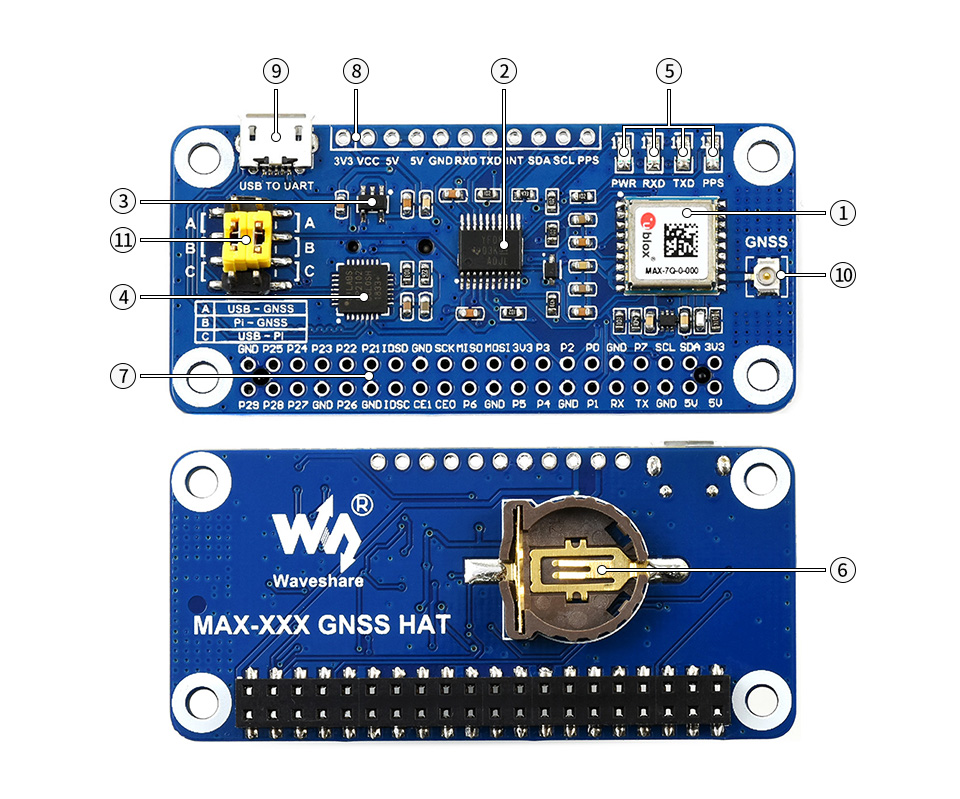
- MAX-7Q module
- TXS0108EPWR voltage translator
- RT9193-33 power chip
- CP2102 USB TO UART converter
- Status indicators
RXD/TXD: UART TX/RX indicator
PPS: GPS status indicator
PWR: power indicator - Battery holder
supports ML1220 rechargeable cell, for preserving ephemeris information and hot starts
- Raspberry Pi GPIO header
for connecting with Raspberry Pi - UART, I2C interface
for connecting with other MCUs - USB TO UART port
- GNSS antenna connector
- UART selection jumper
A: control the MAX-7Q through USB TO UART
B: control the MAX-7Q through Raspberry Pi
C: access Raspberry Pi through USB TO UART
